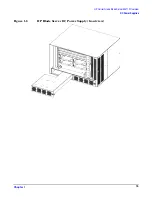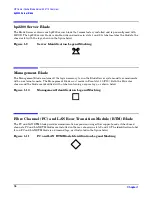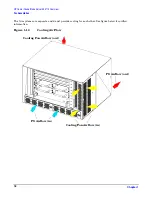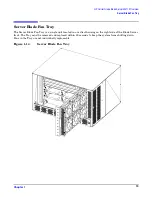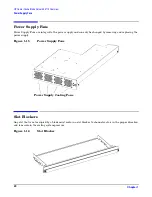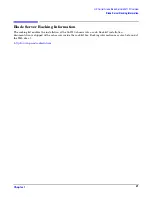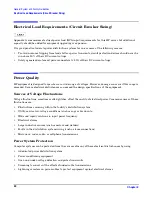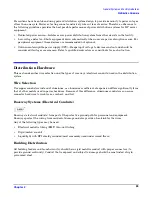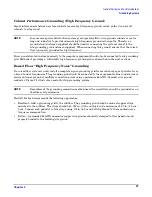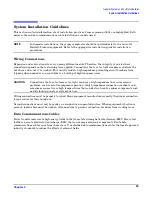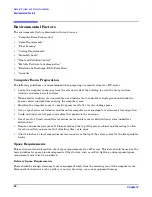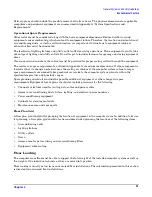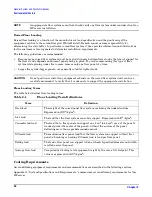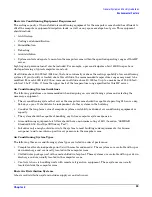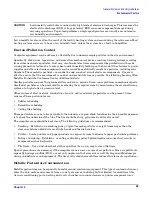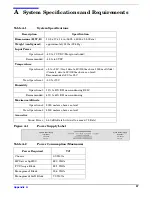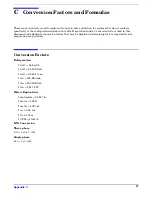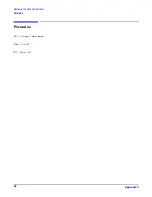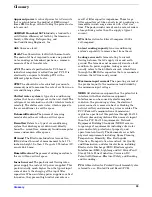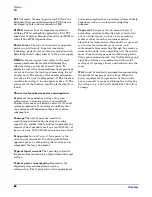
Chapter 2
General System and Facility Guidelines
System Installation Guidelines
29
System Installation Guidelines
This section contains information about installation practices. Some common pitfalls are highlighted. Both
power cable and data communications cable installations are discussed.
NOTE
In domestic installations, the proper receptacles should be installed prior to the arrival of
Hewlett-Packard equipment. Refer to the appropriate installation guide for installation
procedures.
Wiring Connections
Expansion and contraction rates vary among different metals. Therefore, the integrity of an electrical
connection depends on the restraining force applied. Connections that are too tight compress or deform the
hardware and cause it to weaken. This usually leads to high impedance preventing circuit breakers from
tripping when needed or can contribute to a buildup of high frequency noise.
CAUTION
Connections that are too loose or too tight can have a high impedance that cause serious
problems, such as erratic equipment operation. A high impedance connection overheats and
sometimes causes fire or high temperatures that can destroy hard-to-replace components such
as distribution panels or system bus bars.
Wiring connections must be properly torqued. Many equipment manufacturers specify the proper connection
torque values for their hardware.
Ground connections must only be made on a conductive, nonpainted surface. When equipment vibration is
present, lockwashers must be used on all connections to prevent connection hardware from working loose.
Data Communications Cables
Power transformers create high-energy fields in the form of electromagnetic interference (EMI). Heavy foot
traffic can create electrostatic discharge (ESD) that can damage electronic components. Route data
communications cables away from these areas. Use shielded data communications cables that meet approved
industry standards to reduce the effects of external fields.

